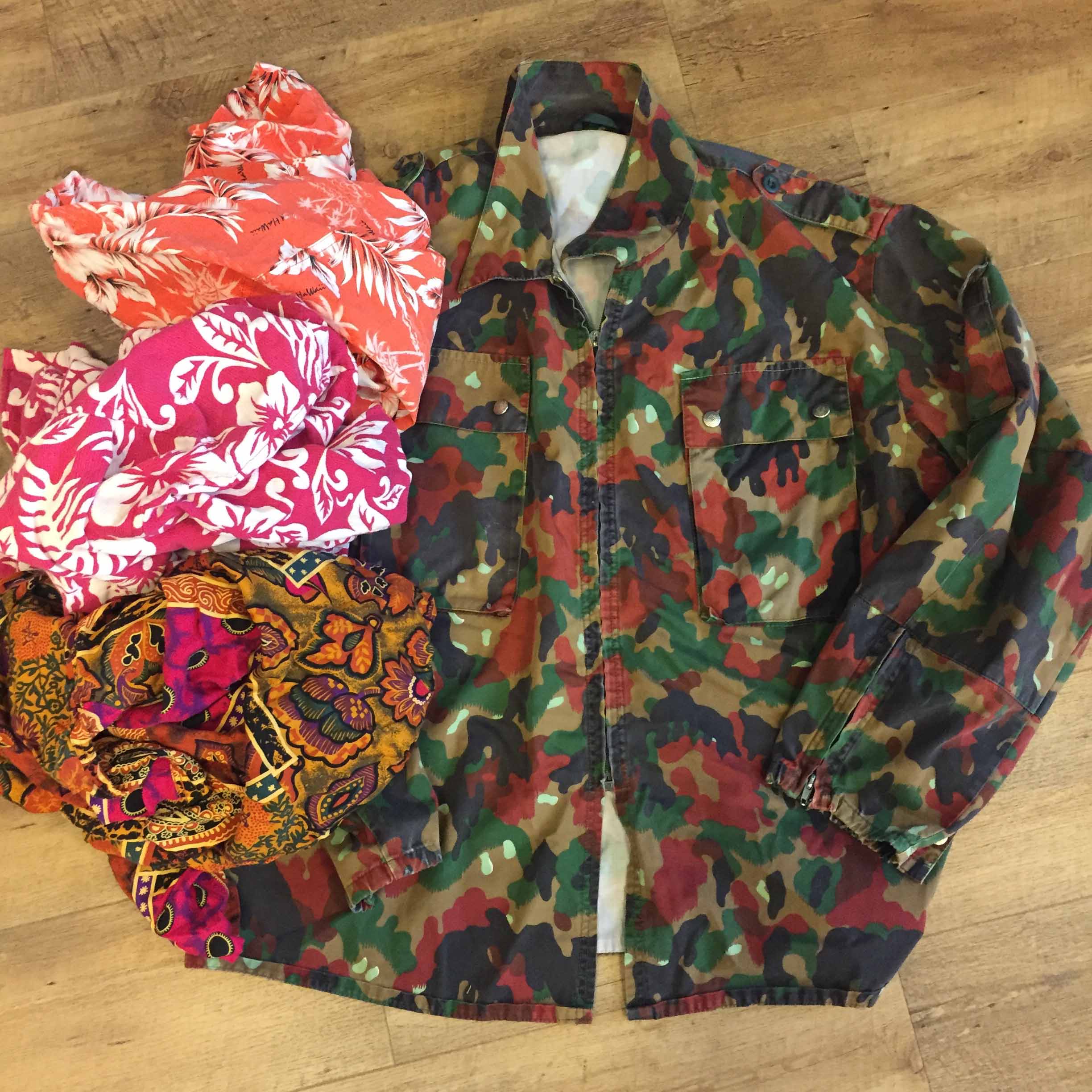MYAR SS20COLLECTION / RE_ALOHA / PRESENTS
CHS9A
SWISS ARMY SHIRT - 1990’S
PRESENT
Swiss camouflage shirts with vintage aloha shirts cut out in wood land camouflage shape applied on allover.
Camouflage in thermo bonding technique using 3 aloha shirt fading in red ,pink, orange, black tone of colors.
Cotton polyester
PAST
The Swiss Military TAZ 83 is applied to the Swiss Army Kampfanzug 57/70 ("combat dress") and TAZ 83 (Tarnanzug, i.e. "camouflage dress". It also is known as "Alpenflag" or "pizza camouflage" among collectors of militaria. As military surplus camouflage clothing it came on to the army surplus market in the 1990s. The pattern is based on an experimental all-terrain pattern that saw limited service in World War II by Germany's Waffen-SS and Wehrmacht called Leibermuster.
The Kampfanzug 57/70 is a six-colour camouflage pattern consisting of a tan-coloured background with white random flecks with light green body overprinted with a green, red/reddish brown and black leaf shapes. The choice of red and green would at first glance seem to make this pattern very bright for something intended to conceal, but it works well for FIBUA (fighting in built-up areas) environments and alpine terrain. Swiss soldiers have referred to it as "Vierfrucht-Pyjama", which translates loosely as 'four-colour pyjamas'.
The Kampfanzug 57/70 was issued from 1957 to 1993 (after 1970 with a textile daypack) and the lighter TAZ 83 with different pattern from 1983 to 1993 for non-combat troops, when both dresses were replaced by TAZ 90, a print in colours of green, brown, and black.
Swiss Militärblachen with the TAZ 83 Pattern are still in Use in the Swiss Military along with Militärblachen with a green camo pattern (who is not the same pattern like the TAZ 90).
MAKING OF
MYAR commitment is to bring back to life past used military garments that have been stocked for long time in darkened warehouse, bringing back the light in the present time, for a second life in a civil environment.
The up-cycling process involving MYAR is not only an aesthetic intervention but also a process of historical knowledge
On each garment is applied a QR code that, once scanned, will tell the historical origin of the piece and the type of workmanship that has been made.
This process of customization is also witnessed by a small white cloth sachet containing scraps of fabrics: a part of the past of this garment, which has been modified from the original to be worn today for the future coming.
MYAR a modern view of the past

















